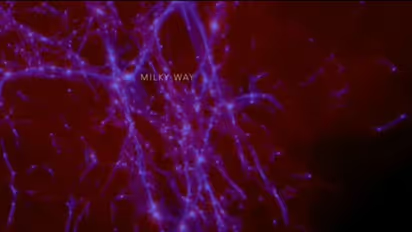Astronomers discover Shiva, Shakti: Two 'oldest' building blocks of the Milky Way Galaxy (WATCH)

Synopsis
Researchers at the Max Planck Institute for Astronomy, Khyati Malhan and Hans-Walter Rix, have made a significant discovery in the study of our galaxy's origins. They have identified two potential early components of the Milky Way, naming them "Shakti" and "Shiva".
Researchers at the Max Planck Institute for Astronomy, Khyati Malhan and Hans-Walter Rix, have made a significant discovery in the study of our galaxy's origins. They have identified two potential early components of the Milky Way, naming them "Shiva" and "Shakti". These cosmic entities are believed to be remnants of galaxies that merged with the Milky Way around 12 to 13 billion years ago, during its formative years.
The process of galaxy formation often involves the merging of smaller galaxies, resulting in the creation of larger structures. Shiva and Shakti represent crucial pieces in unraveling the early history of our galaxy, shedding light on its initial growth stages.
The identification of Shiva and Shakti was made possible through a combination of data from the European Space Agency's Gaia astrometry satellite and the Sloan Digital Sky Survey, providing astronomers with valuable insights into the Milky Way's ancient past.
"We observed that, for a certain range of metal-poor stars, were crowded around two specific combinations of energy and angular momentum," said Malhan.
In contrast to the "poor old heart" visible in the plots, the two clusters of stars with similar characteristics exhibited notably higher angular momentum. This observation aligns with the behavior expected from groups of stars originating from distinct galaxies that later merged with the Milky Way.
The significant energy and angular momentum levels, coupled with their overall low metallicity comparable to that of the "poor old heart," position Shakti and Shiva as promising contenders for being among the Milky Way's earliest progenitors.
"Shakti and Shiva might be the first two additions to the 'poor old heart’ of our Milky Way, initiating its growth towards a large galaxy," said Rix.
Stay updated with the Breaking News Today and Latest News from across India and around the world. Get real-time updates, in-depth analysis, and comprehensive coverage of India News, World News, Indian Defence News, Kerala News, and Karnataka News. From politics to current affairs, follow every major story as it unfolds. Get real-time updates from IMD on major cities weather forecasts, including Rain alerts, Cyclone warnings, and temperature trends. Download the Asianet News Official App from the Android Play Store and iPhone App Store for accurate and timely news updates anytime, anywhere.